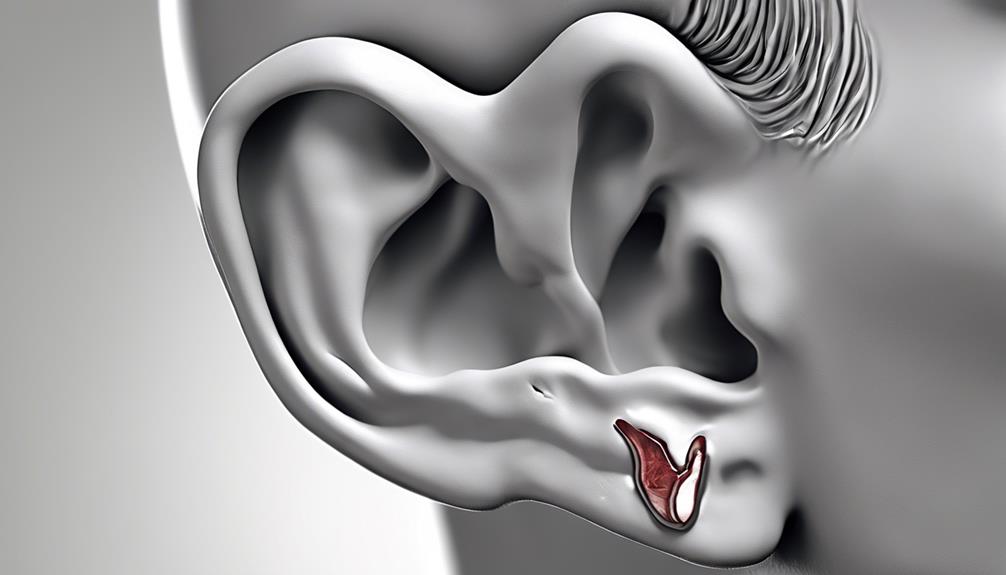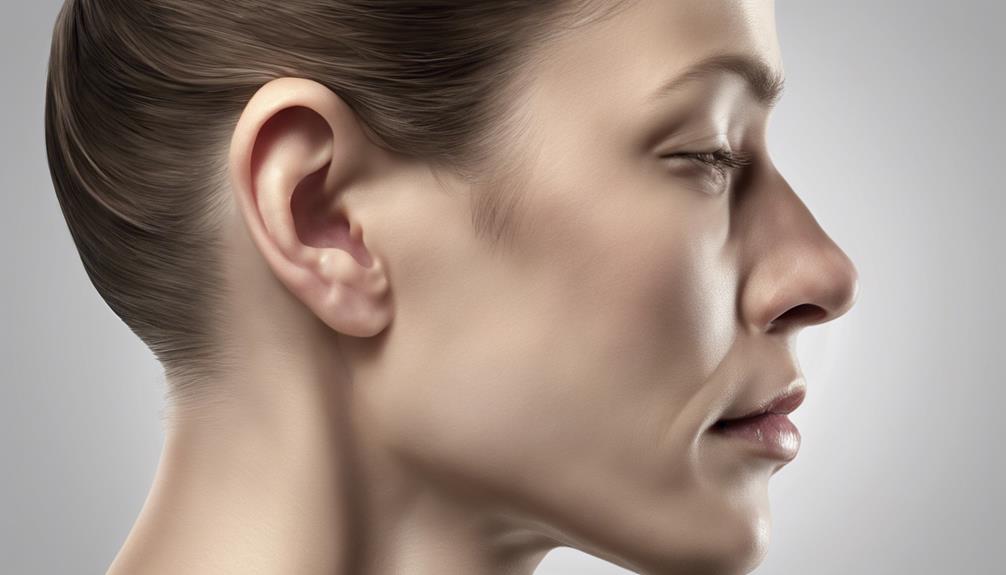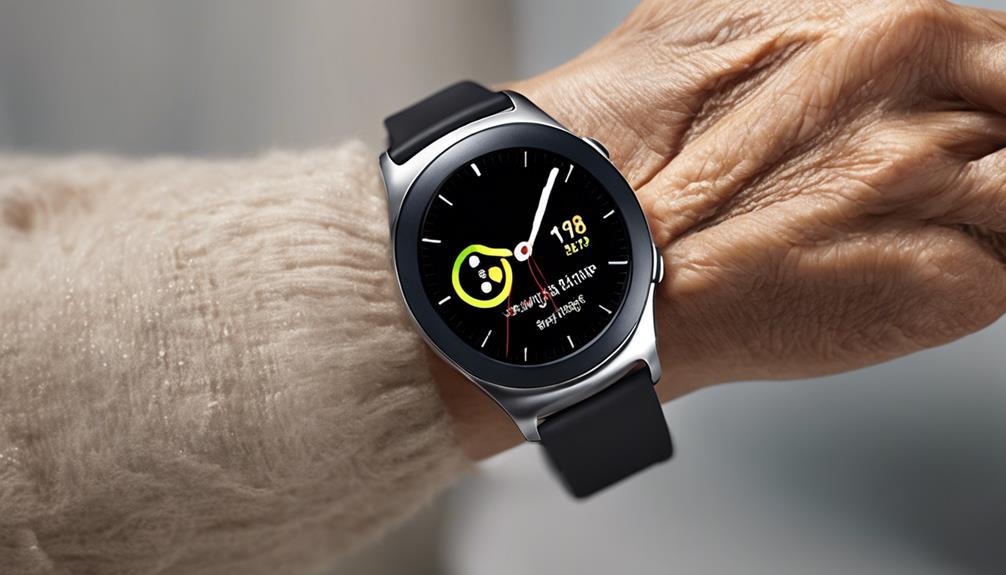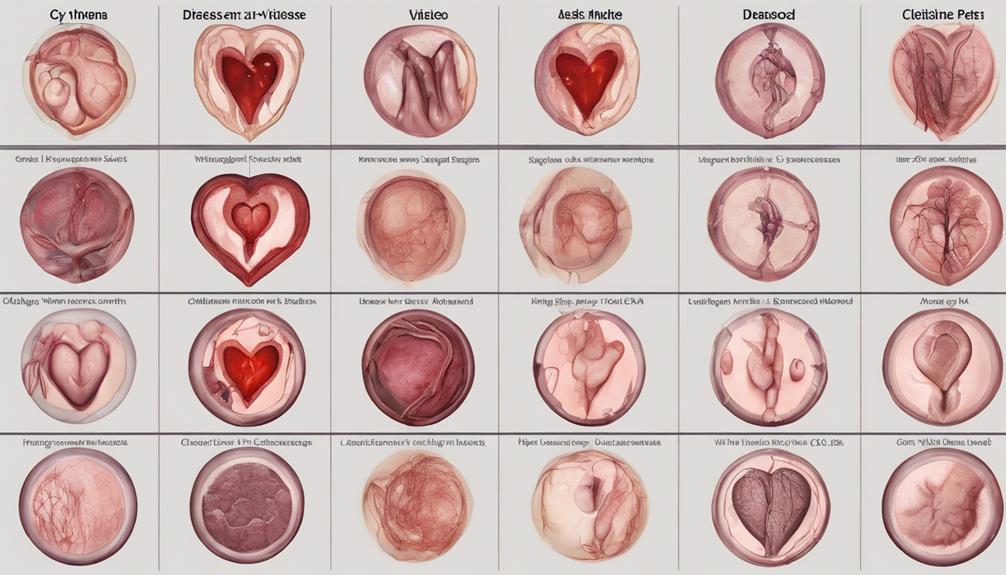Can examining earlobes uncover hints of heart disease, pointing to the possibility of catching cardiovascular risk early? Uncover this fascinating connection that could help detect heart health issues sooner.
The intriguing relationship between these seemingly unrelated features has piqued the interest of researchers and healthcare professionals alike.
Stay tuned as we explore the latest insights into this unique biomarker and its implications for heart health assessment.
Key Takeaways
- Diagonal ear lobe crease predicts CAD risk independently.
- Regular screenings for ear lobe creases assist in managing heart disease risk.
- Early detection crucial for preventing cardiovascular conditions.
- Lifestyle changes and prompt medical attention vital for heart health.
The Link Between Ear Lobe Crease and Heart Disease
In clinical studies, the presence of diagonal ear lobe creases, also known as Frank's sign, has been consistently associated with an increased risk of coronary artery disease (CAD) and peripheral vascular disease.
The relationship between ear lobe creases and heart disease is a significant finding in cardiovascular research. Evidence suggests that the severity of the ear lobe crease may serve as an independent predictor of CAD, aiding in the early identification of individuals at risk for heart disease.
This visible marker, DELC, plays a crucial role in cardiovascular risk assessment, potentially guiding healthcare providers in implementing preventive measures. Regular cardiovascular screenings for individuals with ear lobe creases can facilitate the management of risk factors associated with heart disease.
Understanding the link between diagonal ear lobe creases and heart disease underscores the importance of recognizing this physical characteristic in clinical practice for the early detection and prevention of cardiovascular conditions.
Understanding Ear Lobe Crease Formation

Evidently, the formation of ear lobe creases, such as the diagonal earlobe crease (DELC) or Frank's sign, is attributed to the degradation of elastic fibers and oxidative stress. Understanding the pathophysiological basis of earlobe creases is crucial due to its clinical implications, especially in diagnosing conditions like coronary artery disease (CAD).
Here are key points to consider:
- Elastic fibers: Loss of elastic fibers in the earlobes contributes to the development of creases, indicating a structural alteration.
- Oxidative stress: The role of oxidative stress in ear lobe crease formation highlights the importance of antioxidant mechanisms in preventing tissue damage.
- End-artery pattern: The end-artery pattern in the microcirculation of earlobes makes them susceptible to anoxia, potentially influencing crease development.
- Histopathological findings: Time-related progression of changes in histopathological studies suggests a gradual process in the development of earlobe creases, aiding in understanding the underlying mechanisms.
These factors collectively contribute to the formation of ear lobe creases and provide insights into their clinical relevance.
Risk Factors Associated With Ear Lobe Crease
Our analysis of the risk factors associated with ear lobe crease reveals significant correlations with cardiovascular conditions, emphasizing the clinical relevance of this diagnostic indicator.
Ear lobe crease, also known as diagonal earlobe crease (DELC), shows an association with common risk factors for cardiovascular disease such as hypertension, diabetes mellitus, hyperlipidemia, and even occipital baldness.
Studies have found that 57.2% of individuals with DELC also have ischemic heart disease (IHD), highlighting the strong link between ear lobe crease and heart health. Hypertension was prevalent in 72.6% of patients with DELC, underscoring its importance as a risk factor for heart disease.
Additionally, occipital baldness, diabetes mellitus, and hyperlipidemia were present in significant proportions of individuals with DELC, further indicating their association with cardiovascular risk.
Early identification of DELC during clinical examinations, alongside consideration of these other risk factors, can play a crucial role in predicting and managing impending ischemic heart disease in individuals.
Research Findings on Ear Lobe Crease Heart Disease

Research findings indicate a strong correlation between Diagonal Earlobe Crease (DELC) and coronary artery disease (CAD), highlighting DELC as a significant indicator of subclinical atherosclerosis.
Research Findings on Ear Lobe Crease Heart Disease:
- DELC as a Predictor of CAD:
- Studies suggest DELC may serve as an independent predictor of CAD, emphasizing its potential in early diagnosis.
- Etiology of DELC and CAD Association:
- The link between DELC and CAD is attributed to age-related changes and microvascular disease affecting elastic fibers in both earlobes and coronary arteries.
- Importance of Visible Markers in CAD Detection:
- Recognition of DELC by clinicians can aid in the timely diagnosis of CAD, enabling prompt intervention and management.
- Significance of DELC in CAD Risk Assessment:
- Research from the Copenhagen City Heart Study supports the predictive value of DELC for CAD, underscoring the importance of visible markers in identifying individuals at risk for heart disease and facilitating early intervention strategies.
Heart Health Tips for Ear Lobe Crease Concerns
In addressing concerns related to ear lobe creases and heart health, regular cardiovascular screenings and risk assessments play a crucial role in early detection and prevention of heart disease. Managing conditions like hypertension, diabetes, and hyperlipidemia is key to reducing heart disease risk in individuals with ear lobe creases. Lifestyle changes, including adopting a healthy diet, regular physical activity, and stress management, are vital for enhancing heart health in this population. Prompt medical attention should be sought for symptoms such as chest pain or shortness of breath to address potential heart issues effectively. Engaging in discussions with healthcare providers regarding the significance of ear lobe creases in relation to heart health can lead to personalized preventive strategies and monitoring.
| Heart Health Tips | Importance | Examples |
|---|---|---|
| Cardiovascular Screenings | Early Detection | ECG, Stress Tests |
| Risk Assessments | Prevention Strategies | Blood Tests, BMI |
| Lifestyle Modifications | Heart Health Improvement | Healthy Diet, Exercise |
| Symptom Awareness | Prompt Medical Attention | Chest Pain, Shortness of Breath |
Frequently Asked Questions
Is a Crease in the Earlobe a Sign of Heart Disease?
Yes, a crease in the earlobe can potentially indicate heart disease. Research has shown a correlation between the presence of an earlobe crease and an increased risk of coronary artery disease and other vascular conditions.
While the exact mechanism linking the two remains unclear, earlobe creases could serve as a visible marker for clinicians to consider when assessing cardiovascular risk. Further evaluation may be warranted for individuals displaying this physical trait.
What Is the Ear Sign of Heart Disease?
When exploring the ear sign of heart disease, we consider Diagonal Earlobe Crease (DELC), also known as Frank's sign. This visible diagonal crease in the earlobe has shown a significant association with coronary artery disease (CAD).
Recognizing DELC can be crucial in identifying potential markers for cardiovascular health. Proper assessment of this ear sign may aid in early diagnosis and intervention, especially for individuals at risk of CAD and adverse cardiac events.
What Is the Life Expectancy of Someone With Atherosclerosis?
We can understand the varying life expectancy of individuals with atherosclerosis by considering the condition's severity and unique risk factors. Complications such as heart attacks, strokes, or peripheral artery disease can significantly impact life expectancy.
Early detection, lifestyle adjustments, and effective risk management are crucial in improving outcomes for those with atherosclerosis. Proactive measures and medical interventions play pivotal roles in enhancing prognosis and extending the lifespan of affected individuals.
How Accurate Is the Frank's Sign?
When considering the accuracy of Frank's sign in detecting chronic coronary syndromes, it's essential to acknowledge the varied results in studies. While its presence might slightly influence pre-test probability, it shouldn't be the sole basis for clinical decisions.
Research examining the association between Frank's sign and cardiovascular risk factors in diverse patient populations has provided insights. Combining this indicator with other risk factors can prompt further evaluation for coronary atherosclerotic disease.
Conclusion
In conclusion, the presence of ear lobe crease may serve as a valuable indicator of underlying heart disease risk. This unique correlation highlights the intricate connection between seemingly unrelated body features and cardiovascular health.
By incorporating ear lobe crease assessment into routine clinical evaluations, healthcare professionals can potentially identify individuals at higher risk for heart disease and implement preventive measures. Early recognition and intervention are crucial in the battle against cardiovascular disease.









